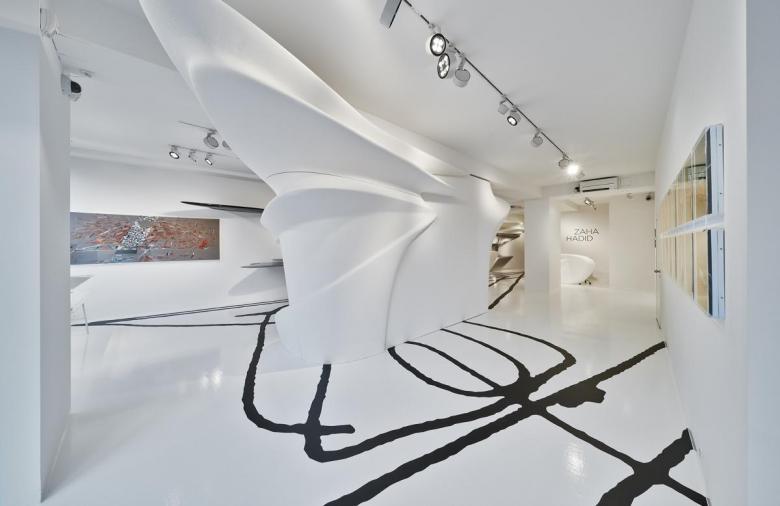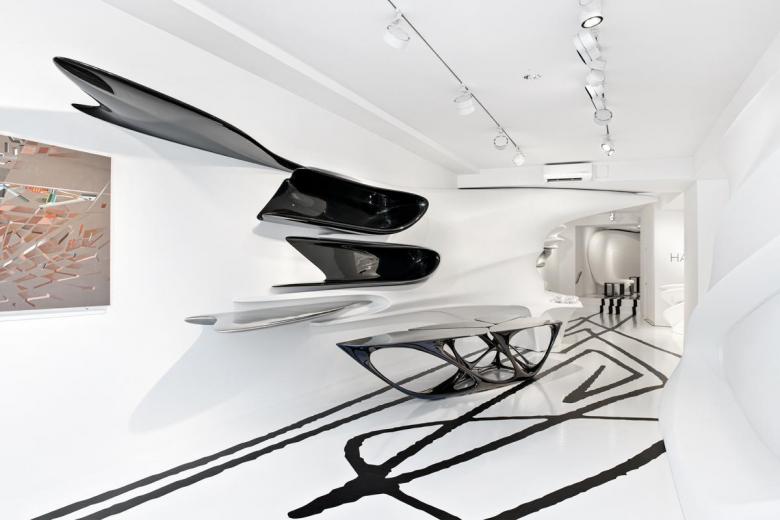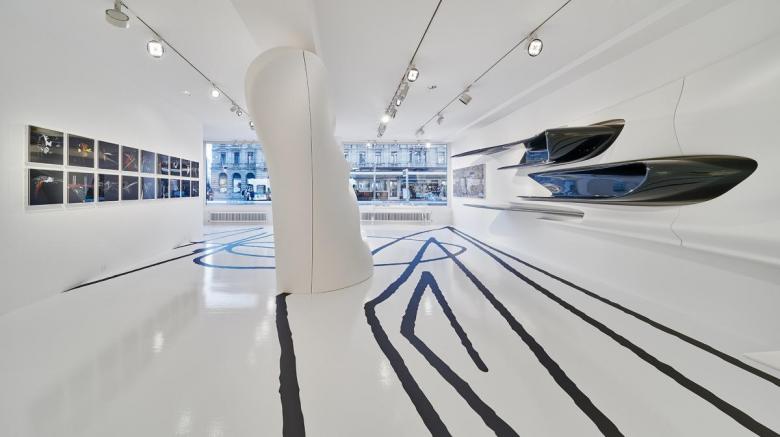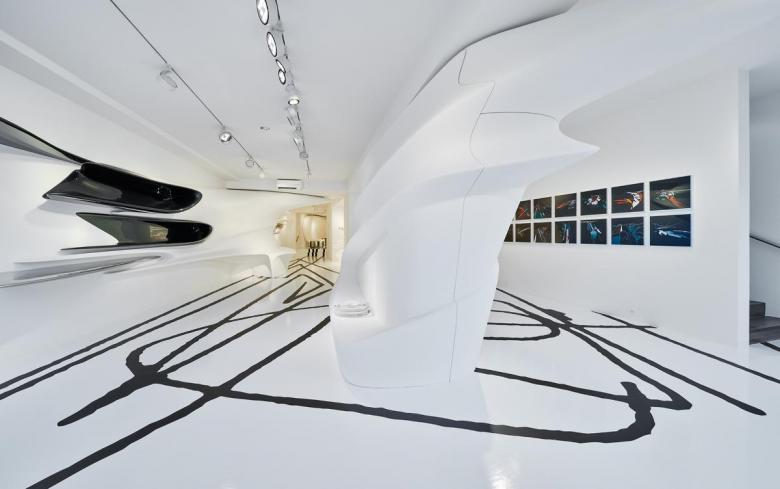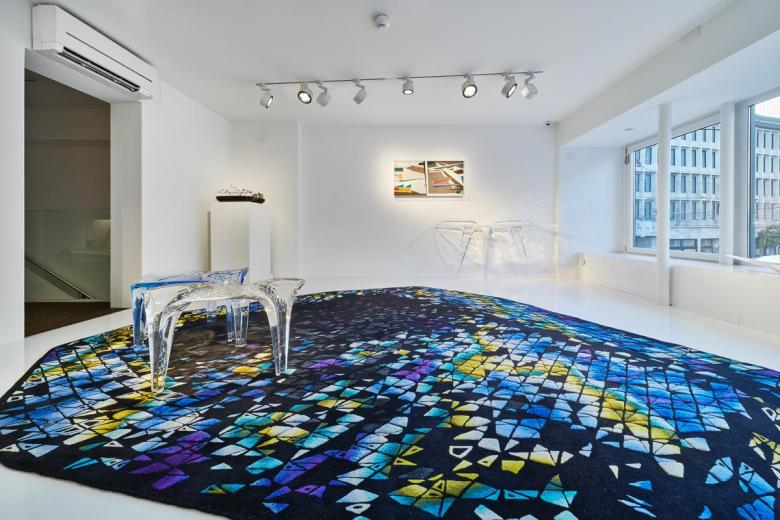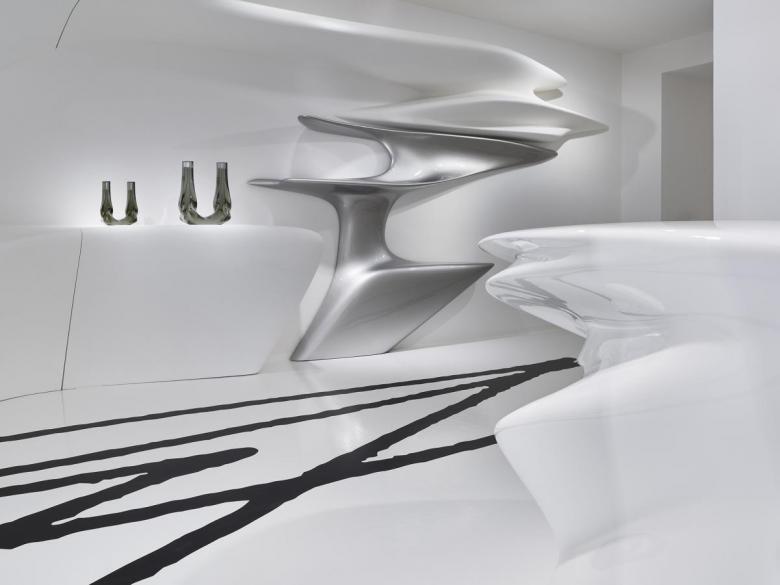Rejected, Ignored, Admired
Elias Baumgarten
18. mayo 2021
Photo © Zaha Hadid Design, courtesy of Galerie Gmurzynska
March saw the fifth anniversary of Zaha Hadid’s death, something the architecture scene took surprisingly little notice of. An exhibition at Galerie Gmurzynska in Zurich, intended as an homage, focuses on the Pritzker Prize winner’s enthusiasm for the Russian avant-garde.
Zaha Hadid died unexpectedly on the last day of March 2016 at the age of only 65 — far too young. The news spread like wildfire and moved many non-architects alike, such was her celebrity status. Five years have passed since then. Yet anyone expecting a new analysis of the exceptional architect’s work on the occasion of the fifth anniversary of her death will be disappointed. Little has been heard about the Pritzker Prize winner of 2004; only a few publications about her work have appeared these days, and exhibitions are rare. Why is that? “With every new jury award and every completed building,” wrote German journalist Norman Kietzmann in 2016 in an empathetic obituary for BauNetz, “envy grew. After all, the increasingly eccentric shapes provided a maximum target for attack. The rounder the blob, the more generously the entire industry could vent its frustration.”
One thing was certain: Zaha Hadid’s architecture was polarizing. While some were enthusiastic and revered her as a role model, her shapes, which changed over the years from angular to flowing, meant very little to others. Some even dismissed her later designs as mainstream. Added to this, the interests of many architects are now changing. When I studied in Austria almost ten years ago, Hadid was still celebrated as a heroine. Today, however, many people — especially in Switzerland — are interested in the history of architecture, in making references and citations, or in traditional craftsmanship and historical building methods. There is nothing wrong with that; on the contrary, if anything. But Hadid’s enthusiasm for (avant-garde) art seems a long way off.
Photo © Zaha Hadid Design, courtesy of Galerie Gmurzynska
Throughout her life, Hadid had to fight against great resistance, which sometimes proved difficult for the strong architect, as Zurich gallery owner Mathias Rastorfer knows. For example, the rejection of her project for the Olympic Stadium in Tokyo at the instigation of the conservative architects Toyo Ito and Fumihiko Maki, as he told me in the midst of the Zaha Hadid – Abstracting the Landscape exhibition currently on display at Galerie Gmurzynska, hit her hard.
The exhibition was curated to pay tribute to Zaha Hadid on the fifth anniversary of her death and to express the gallery team’s appreciation of her. It has been just over ten years since the team first worked with her, on the Zaha Hadid and Suprematism exhibition. In 2016, another show followed, this time on Kurt Schwitters (1887–1948) on the occasion of the 100th anniversary of Dadaism. A heart-warming detail: all the staff I talk to during my visit spoke highly of Hadid and with sincere enthusiasm.
Photo © Zaha Hadid Design, courtesy of Galerie Gmurzynska
Abstracting the Landscape mainly comprises drawings and design objects; pieces of furniture in particular are on display, but also a carpet. Although architecture enthusiasts also get their money’s worth, such as with models of the unimplemented project for Cologne’s Rheinauhafen development exhibited right at the entrance, the exhibition focuses on Hadid’s great flair for the art and architecture of the Russian avant-garde — no surprise, since she shared this passion with the team at the Zurich gallery. After Elia Zenghelis, Hadid’s teacher at the Architectural Association in London, whom she held in high esteem, drew her attention to Constructivism, Kazimir Malevich (1879–1935), El Lissitzky (1890–1941), and Alexander Rodchenko (1891–1956) became her most important role models. In fact, Hadid was a great connoisseur of art, a kind of walking encyclopedia, said Rastorfer, who worked with her on a documentary about Malevich for the BBC and was a close friend of hers for years.
Photo © Zaha Hadid Design, courtesy of Galerie Gmurzynska
In her early drawings — some impressive examples can be seen in Zurich — her preference for the Russian avant-garde is clearly evident. From today’s perspective, these works appear to be pieces of art in their own right. But Hadid herself never saw them as art, Rastorfer recalled — not quite easy for an art dealer to admit, he added with a smile. Rather, for her, abstract paintings were always just tools for finding forms, aids for developing a new architectural vocabulary, a field of experimentation.
As soon as one drawing was finished, said the gallery owner with a cheerful, yet nostalgic expression, Hadid immediately shifted her attention to the next one. He was fascinated by her enormous creative power, her insatiable curiosity and her aversion to unproductive, unused time, characteristics that reminded him of Karl Lagerfeld (1933–2019), whom he also knew very well. Incidentally, Rastorfer added, both had a completely unjustified reputation for being difficult personalities. They simply were always extremely focused. Perhaps, one would like to add, in Hadid’s case, the frequent rejection and the fact that she had to fight her way through — like Lagerfeld — also led to what outsiders see as a hard shell.
Photo © Zaha Hadid Design, courtesy of Galerie Gmurzynska
But let’s return to Rastorfer’s fond memories to the exhibition and ask: Why is it worth the visit? The gallery owner and his team — incidentally the same as at the first Hadid exhibition at the art venue on Paradeplatz in 2010 — have succeeded in giving a convincing insight into Hadid’s work with just a few exhibits and in showing the enormous range of her work. From an architectural point of view, one would have liked to see such projects as the Vitra Fire Station (1993), where the influence of Hadid’s interest with the Russian avant-garde is particularly evident. However, to fully enjoy the show, you either need a lot of prior knowledge or an expert guide. It becomes clear to what great extent the roots of the architecture conceived by the Pritzker Prize winner are to be found in art — even if her later projects may seem like computer gimmicks to some. Serious design always originates from a strong attitude and is never a matter of taste — regardless of whether one appreciates it or not.
Photo © Zaha Hadid Design, courtesy of Galerie Gmurzynska
This article originally appeared as "Abgelehnt, ignoriert, bewundert" on Swiss-Architects. Translation by Bianca Murphy.
Artículos relacionados
-
A Housing Roundup
hace 6 días
-
Expanding Marina Bay Sands
hace 1 semana
-
A Solar Power Plant in the Turkish Desert
hace 2 semanas
